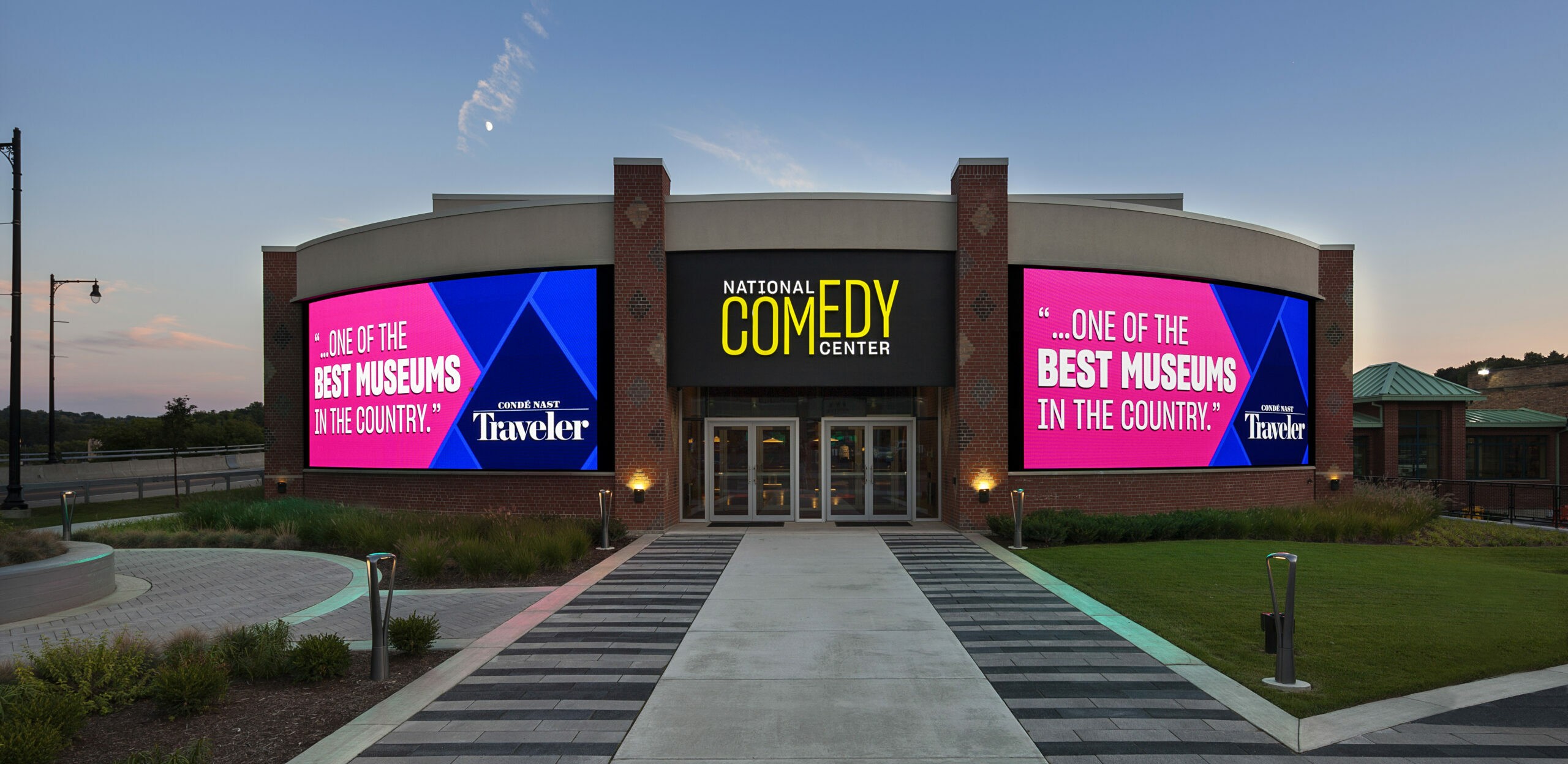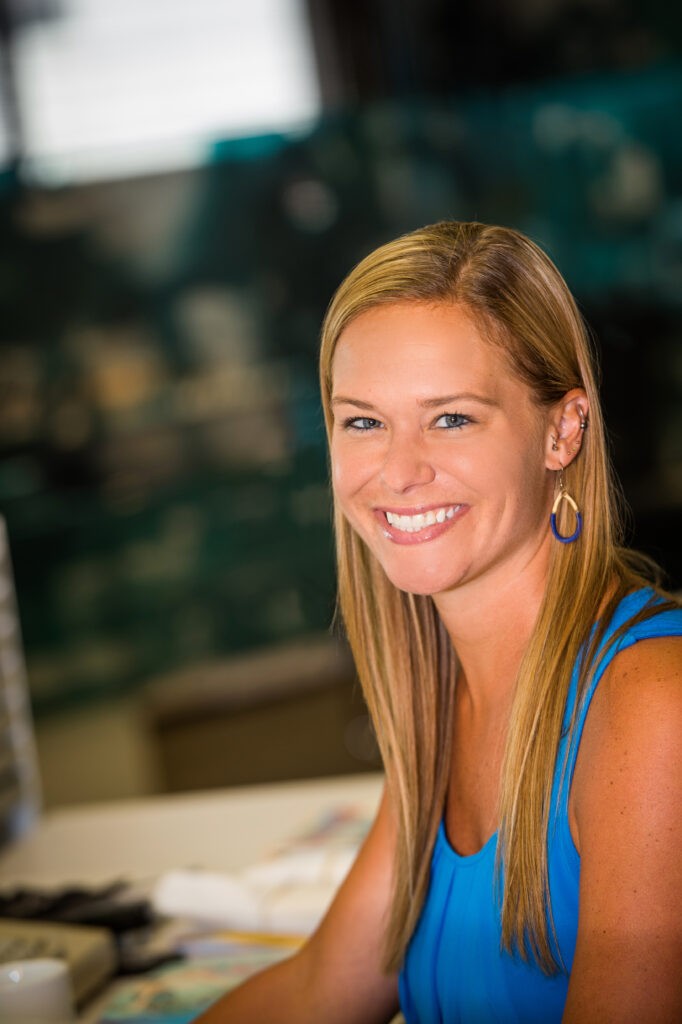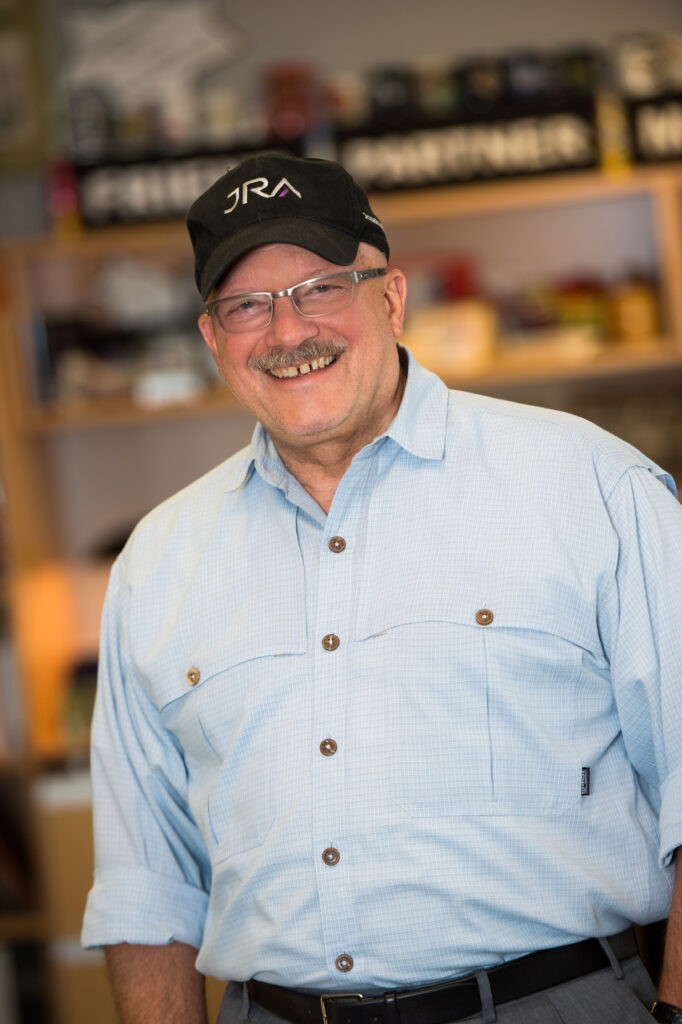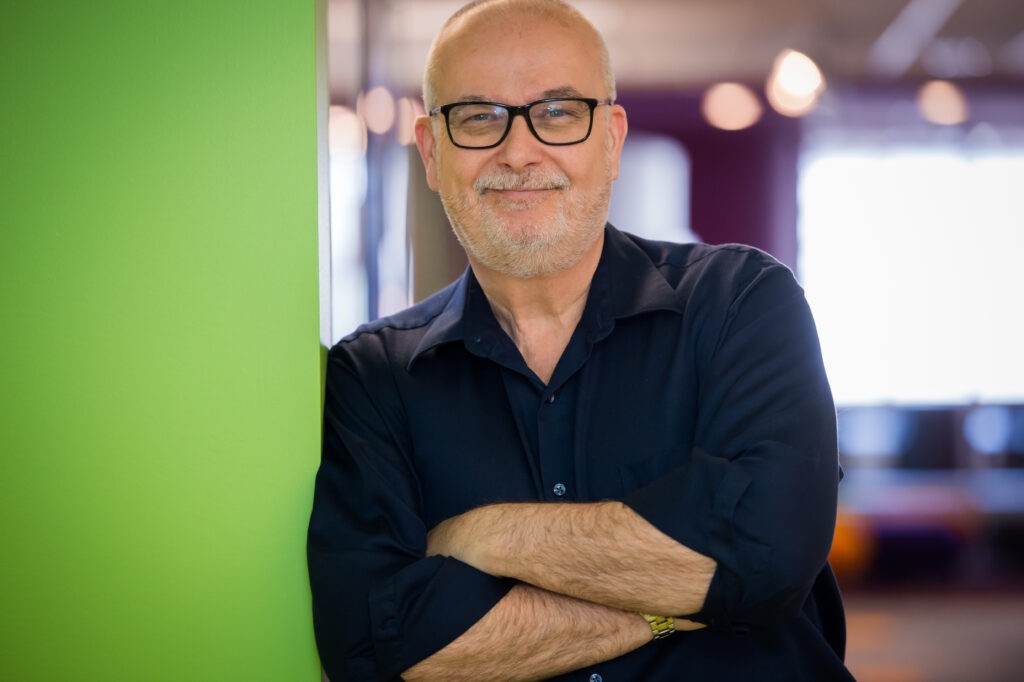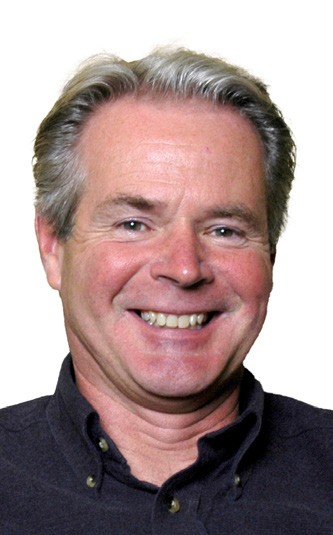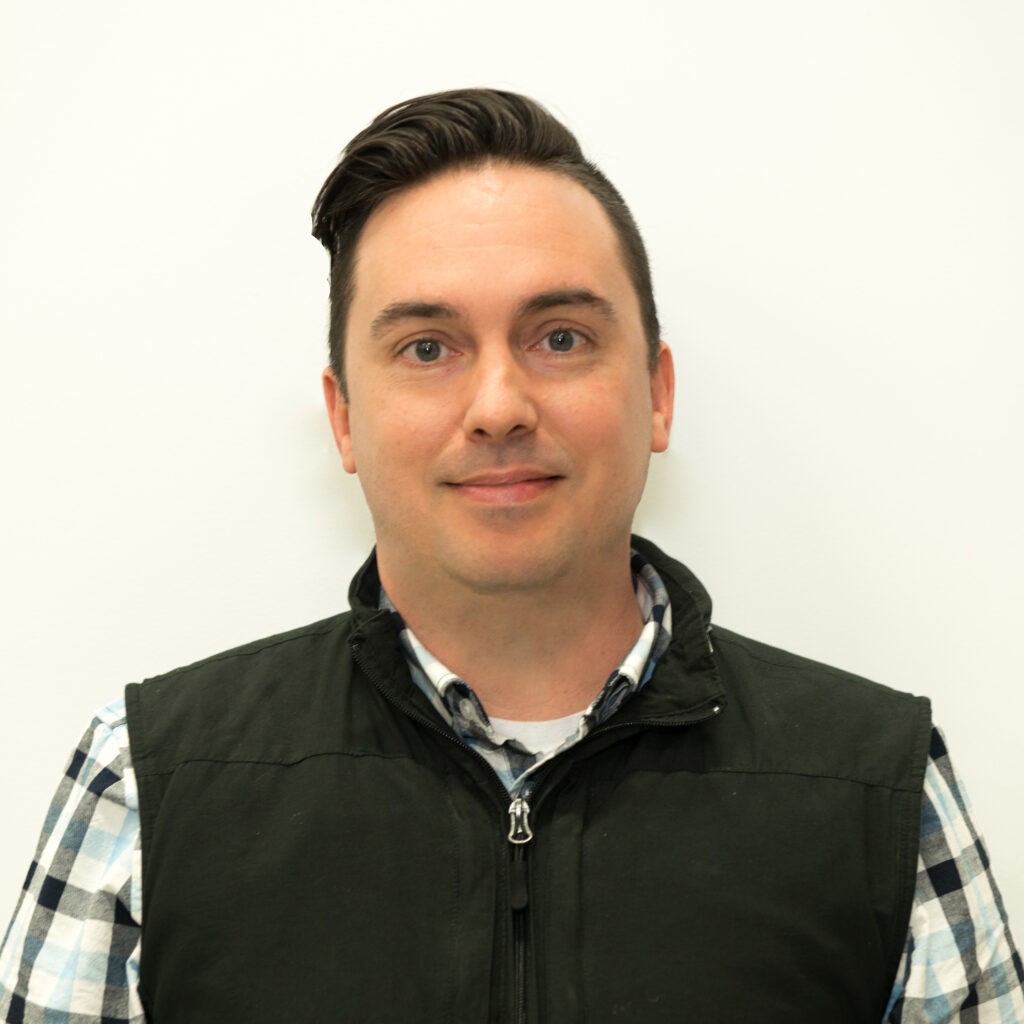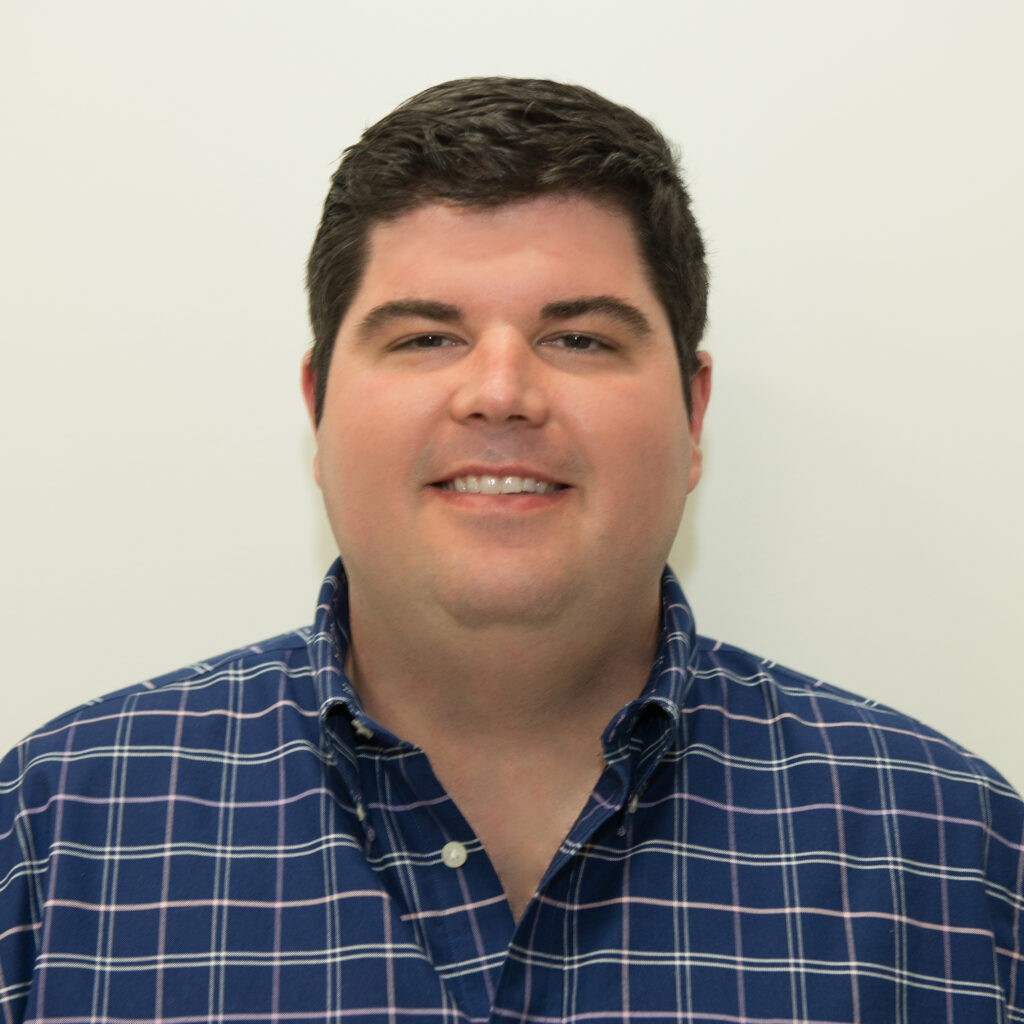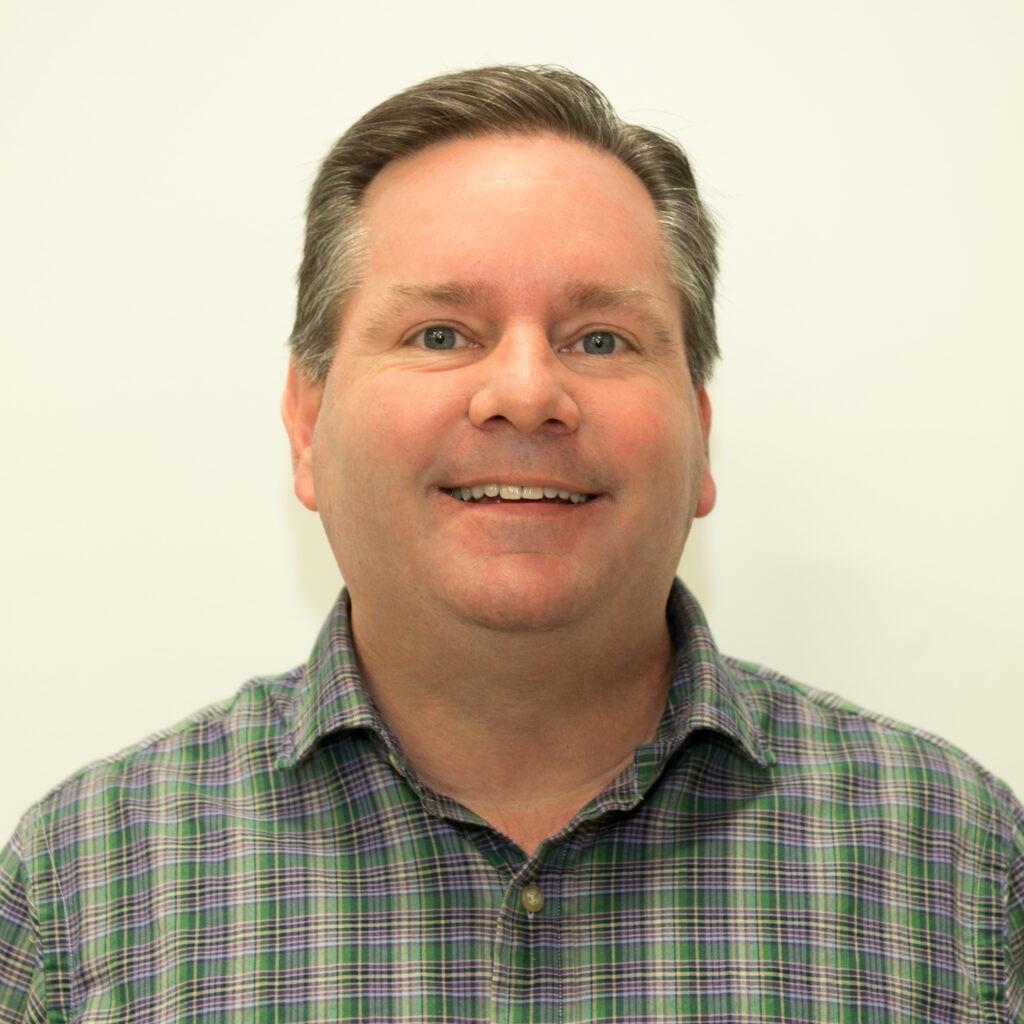Three design firms in the American heartland make unique contributions to the global attractions industry
by Ben Cober
ABOVE: The JRA-designed National Comedy Center in Jamestown, New York. Courtesy JRA.
In the United States, the attractions industry is sometimes perceived as a coastal industry because of the theme park destination hubs of Orlando and Los Angeles (with attendant creative/vendor communities) and the many venerable design firms in New England. This is an oversimplification, of course. The industry is culturally and geographically varied and diverse. Its regional riches span a wide range of attractions, and numerous world-class design firms call the American Midwest home while serving a regional, national and global clientele.
Here, we explore three such design companies: JRA in Cincinnati, Ohio; Weber Group in Sellersburg, Indiana; and Sage Creative Group, in Chicago; with a view to understanding the unique Midwest magic” each brings to the industry and their craft.
JRA: Valuing people
In his nearly 30 years overseeing Cincinnati-based JRA, Keith James has lost count of how many times he’s been asked about moving the company to a coast. Most of these conversations begin with highlighting the hypothetical advantages associated with a single project or potential client, and they all end with the confident affirmation that the company is already located where it should be.
“Home is our people. If we opened on the coast, we’d have to move 45 people with us, because JRA is our team,” says James, who is a past president of the Themed Entertainment Association as well as recipient of TEA’s lifetime honor, the Buzz Price Thea Award for a Lifetime of Distinguished Achievements. (Company founder Jack Rouse, from whom James acquired the company several years ago on Rouse’s retirement, has also received Thea lifetime honors.) “If we can do what we need to do and be successful from Cincinnati, why would I want to go anywhere else?”
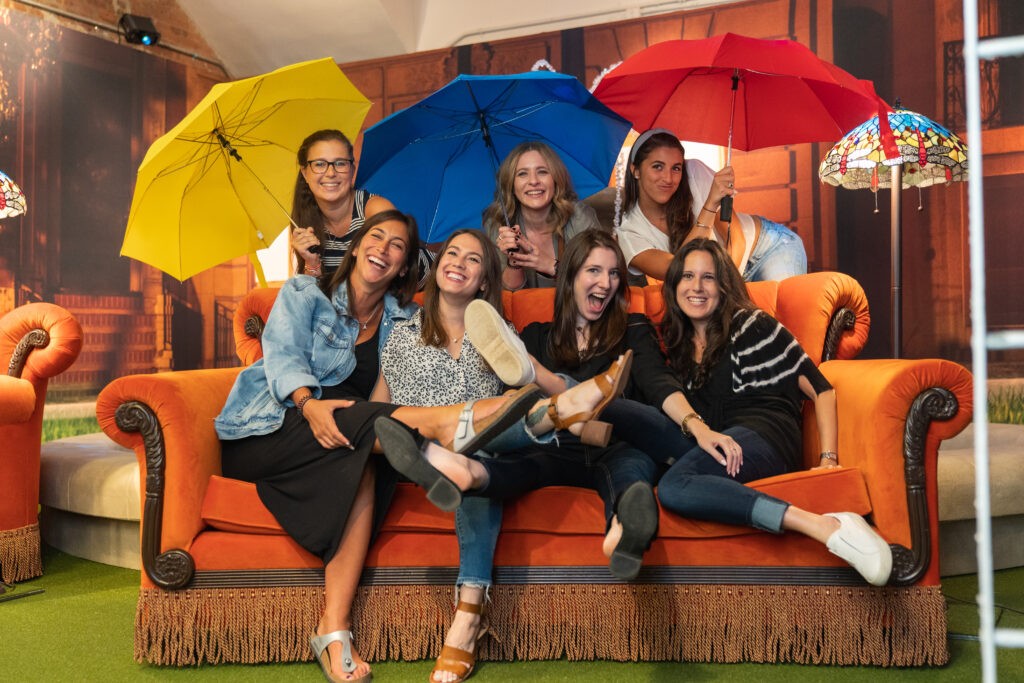
The FRIENDS™ Experience empowers superfans to find themselves in
the iconic scenes of one of history’s most successful sitcoms. Courtesy JRA.
And JRA has certainly been successful from Cincinnati as a provider of master planning, attraction planning and design, content development, and project management to numerous attraction markets. Those in search of a versatile collaborator may knock on JRA’s doors, having seen Ferrari World Abu Dhabi, one of the world’s largest indoor theme parks, on which JRA served as master planner, designer, and project manager. The park recently marked its 10th anniversary. Turning from speed and adrenaline to comedy and unique interactive exhibits, JRA is a professional funny bone-tickler. TIME magazine named the JRA-designed National Comedy Center in Jamestown, New York as one of the “World’s Greatest Places of 2019,” while The FRIENDS™ Experience, also a JRA project, empowers superfans to find themselves in the iconic scenes of one of history’s most successful sitcoms.
As a young man, Keith James started out at then recently opened Kings Island in Mason, Ohio. Subsequently, he worked with Canada’s Wonderland, Australia’s Wonderland, and Universal Studios Florida. He talked about the value of gaining experience on both the operations and the creative supplier sides. “Certainly, there’s the objective benefit of simply understanding how an attraction operates, having been on the inside for so many years,” reflects James. “But more importantly, there’s an empathy that accompanies it. You understand what their teams have been through, what they’re going through, and what they hope for – because you’ve been in that seat yourself. When collaborating on a new attraction, the only person not in the room is the most important one – the guest.”
Sports culture – also closely tied to family – permeates the Midwest. Cincinnati made a landmark contribution to baseball culture with the Cincinnati Red Stockings, the first openly professional baseball club and dating back to the 1860s. JRA’s portfolio includes numerous sports-related projects in the region, including the Louisville Slugger Museum & Factory, Steelers Country at Kennywood Park, the Columbus Blue Jackets Nationwide Arena; the Indiana Pacers’ Bankers Life Fieldhouse and the Mascot Hall of Fame in Whiting, IN.
Empathy with families may be one of the key ingredients to making JRA a pre-eminent designer of children’s museums in the US and internationally, including Lao Niu Children’s Discovery Museum (Beijing), Imaginosity (Dublin), El Museo de los Niños (Guatemala), Enginuity (UK) and the Children’s Museum of Atlanta. “Of course, children’s museums start with a focus on kids,” says James, “but parents have to be engaged as well, or the museums simply won’t work.”
L to R: Chloe Hausfeld, Keith James, Dan Schultz. Courtesy JRA.
JRA Director of Marketing and Business Development, Chloe Hausfeld, noted that a lot of their current talent has roots in the theater world, and the collaborative mentality of a performing arts team is apparent in JRA’s cultural terroir. From Keith James serving as Universal Studios Florida’s VP of Show Production, to Director of Communications Clara Rice’s career with Yale Repertory Theatre and Cincinnati Playhouse in the Park, from Executive Producer Anita Daugherty’s work in commercial advertising production, to Senior Project Manager Rebecca Parnell’s work at Cincinnati Playhouse in the Park as well, one finds a great deal of performing arts culture in the JRA ranks. The city itself boasts two best-in-class art schools within the University of Cincinnati: the College of Design, Architecture, Art, and Planning (DAAP), and the College-Conservatory of Music (CCM). “Everyone pulls together,” says Dan Schultz, Chief Operating Officer. “And despite whatever egos may come and go, the director doesn’t rule: the audience rules.”
“We operate like a family here. It’s an office full of aunts, uncles, and cousins,” says James. Looking around Cincinnati, it’s almost immediately obvious to see the city’s roots in family. Many of the Queen City’s Fortune 500s find their humble roots in family beginnings, and their core products and services are targeted at families today, including Procter & Gamble, Kroger, Fifth Third Bank and more. Even the doorbell – a worldwide sign of “hello family” – was developed in Cincinnati by the Corbetts, whose resulting wealth would go on to fund the University of Cincinnati’s CCM.
“The Midwest gives us a unique perspective on the family guest, the core attraction visitor demographic,” says Hausfeld. “Midwest families are tight-knit; even if you grew up in the Midwest and you move away for a time, the majority come back – it’s the way of life here, our values, and that family-centric mindset and lifestyle.”
JRA maintains that its team, that team’s culture, and its ability to empathize with attraction-going families have been critical to its success. “It’s said that none of us is as smart as all of us,” says James, “and that’s absolutely true.”
Sage Creative Group: Recognizing opportunity
Burning sage, or “smudging,” is a Native American ritual for purging negative energies – which is sometimes what a museum exhibit design (or redesign) needs, along with sagacity on the part of its creators. Faith Griggs and John Beckman, founders of the Chicago-based, boutique design firm Sage Creative, feel the analogies to their museum work.

Hamilton: The Exhibition rises out of the ground on a peninsula stretching into Lake Michigan. Courtesy Sage Creative.
Sage’s outstanding achievement so far has been managing the production and design of “Hamilton: The Exhibition” in 2019. This immersive, multimedia exhibit of massive scope, installed in a custom building on Chicago park land, took visitors through 14 galleries over 25,000 square feet. It utilized interactive games and displays, lifelike projections, full-scale statues, art installations, music and theater to explore Alexander Hamilton’s life, the American Revolution and the creation of the USA in ways that complemented and celebrated the blockbuster musical.
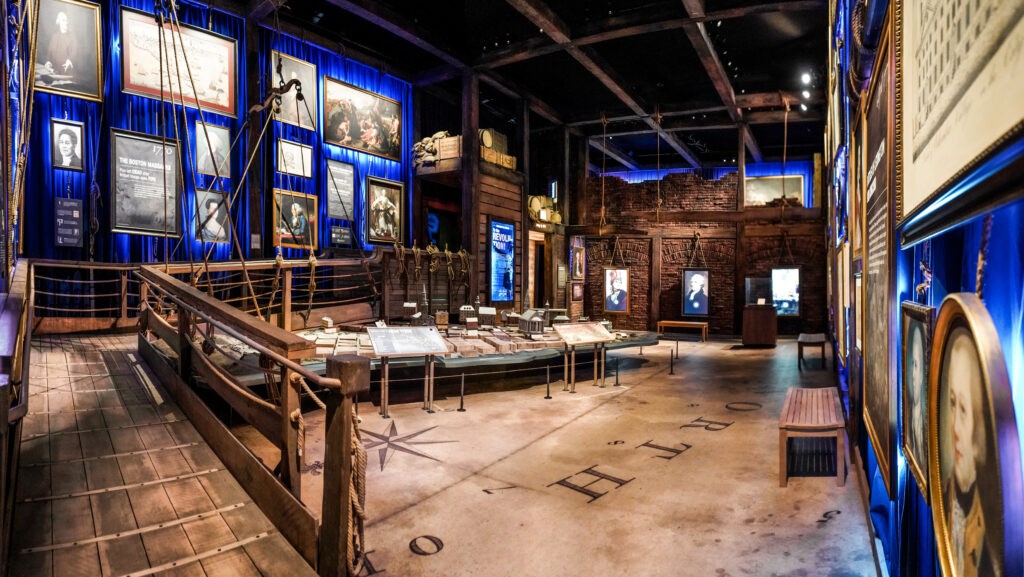
Hamilton: The Exhibition in Chicago took guests through 25,000 square feet of interactive galleries. Photo © 2019 David Korins.
In addition to exhibition management and coordination, the Sage toolbox also includes concept development, brainstorming, design, and many other services which flex as needed for their clients. Throughout his career, Beckman has straddled the operations and the creative side of museums. While continuing as co-principal of Sage, his “day job” is Director of Exhibit Design and Production with the venerable Adler Planetarium, which marked its 90th anniversary earlier this year. He previously spent 16 years with the Museum of Science and Industry, Chicago (MSI), one of the 20 top-attended museums in North America. As Director of Exhibit Design and Development, Beckman had a hand in creating and/or presenting some of MSI’s most popular and celebrated exhibitions, including “Action! An Adventure in Moviemaking;” “Leonardo da Vinci: Man, Inventor, Genius”; and the renovation of MSI’s Henry Crown Space Center.
Many of these projects were traveling or temporary exhibits, which have become key offerings for many museums and science centers to drive attendance, attract new audiences and showcase content that their own budgets or missions may not support in a permanent setting. “You never know when the next kid who gets inspired by seeing a robot in their town will then turn out to be a scientific powerhouse later in life,” says Griggs. “And there’s much for the museum world to learn from pop-ups, LBE and other non-traditional formats.”
For her part, Griggs was an Exhibit Project Manager for five years at MSI, a role she took on after 11 years managing Broadway theater tours. Exhibits on which both Beckman and Griggs worked at MSI included “Brick by Brick,” which used LEGO® brick replicas of architectural icons to teach principles of building; “Treasures of the Walt Disney Archives;” “Numbers in Nature,” showing mathematical patterns in the natural world; and “Robot Revolution.”
A boutique firm relies on a dependable network to build its project teams. For Griggs, it’s an echo of her origins growing up on a small family farm in Southeastern Iowa. “If something broke, or stopped working, or you needed help, or an animal was sick, you called your neighbor. It created a strong community, bonded through honesty, handshakes, and reliability, and that couldn’t be truer of Midwestern culture today.”
Over the course of many years in the attractions industry, you begin to build your own reliable village around you; not just clients, but electricians, plumbers, city departments, unions, scene shops, audio shops, musicians, and more. “When you hire Sage, you’re not just hiring the two of us – you’re getting our entire village,” says Griggs.
MSI wanted to base “Robot Revolution” in real, tangible science that was being developed in the modern world. Griggs took on the title of “robot wrangler” as she sourced, negotiated with, and traveled to over 30 different universities, Fortune 500s, and laboratories to bring these robots to roost in their exhibit hall, constantly reassuring and signing paperwork to take care of them as if they were her own. “You do whatever it takes to get the job done, and you have to learn quickly what you don’t already know as you go along, or else you miss the opportunity.”
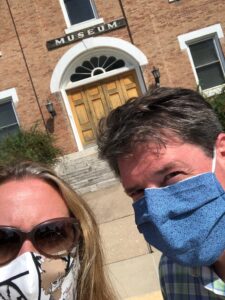
In 2018, Griggs and Beckman eagerly embraced the opportunity to join the team for “Hamilton: The Exhibition” when the call came from IMG, project manager for the exhibition. In a three-week whirlwind, the two put in a proposal, won the work, traveled to New York City and Atlanta to meet the other teams, and founded Sage Creative Group.
The resulting success was testament to their bringing the right combination of skills and experience to the job, the value of their professional network and their ability to pull off a warp- speed project. The pre-selected Chicago site for “Hamilton: The Exhibition” sat on a barren peninsula stretching out into Lake Michigan, void of utilities and structures, and completely open to the elements. Over the next several months of production and design managing the exhibition, Sage would build a road, set up an electricity infrastructure, locate a water main, work around a railroad strike, and protect their on-site team from a Polar Vortex – all while assembling temperature sensitive exhibit equipment in the nearby underground parking garage at Soldier Field. As guests moved throughout the space, audiotour devices would automatically trigger narration by the show’s author and star, Lin- Manuel Miranda and others. The exhibition opened on time to universal praise. Griggs and Beckman, persistent to the end, laugh as only the survivors of a Herculean labor can: “After that, we feel like we can do anything!”
The Weber Group: Authenticity
Fabrication and design specialist Weber Group, Inc. was ahead of its time when it was founded in 1983, long before design-build firms were popular. Brothers and architects Donny and Tom Weber started the company fabricating thematic props for Kings Island (owned at the time by Paramount). Thanks in part to their work expanding the popular Louisville theme park Kentucky Kingdom, the Webers quickly grew the company, capitalizing on their architectural skills and fabrication know-how. That blend of art and technique, design and fabrication, can be found in countless examples within the Weber portfolio, including theme parks, waterparks, zoos, museums and more. From Great Wolf Lodge to Six Flags, NASA to Nickelodeon, and Disney to The Crayola Experience (multiple iterations), it’s hard to throw a crayon and not hit a Weber project.
After founder Tom Weber passed away in 2016, four partners joined owner Donny Weber to help the company better approach evolving trends and markets. Max Weber heads up business development, Adam McIntyre oversees creative design, Jim Doiron leads fabrication and Paul Ohlin holds COO and CFO responsibilities.
Clockwise from top left: Donny Weber, Adam McIntyre, Jim Doiron, Paul Ohlin, Max Weber. Courtesy Weber Group.
In addition to theming, Weber is respected for their residential and commercial construction, including resorts, mixed-use developments, and multi-family housing. Located in Sellersburg, Indiana (near Louisville, Kentucky) the company has expanded its services beyond its design-build core to also offer signage/ graphics, rockwork, technology integration and interactive wet/ dry play areas.
Although Weber’s work can be seen throughout the USA, their specialty seems to center around creative placemaking, particularly in the Midwest.
“Every town in the Midwest is trying to figure out what they’re known for, what puts them on the map,” says Adam McIntyre, Weber Group’s Creative Director. “We get to work on those kinds of projects a lot, and we love them – helping people discover who they are. It’s important to be authentic to who you are, because people are sharp – they can sniff out inauthenticity.”
Each region, town, or destination has their own elements and stories that are authentic to them, “and every good experience is driven by a good story,” says McIntyre.
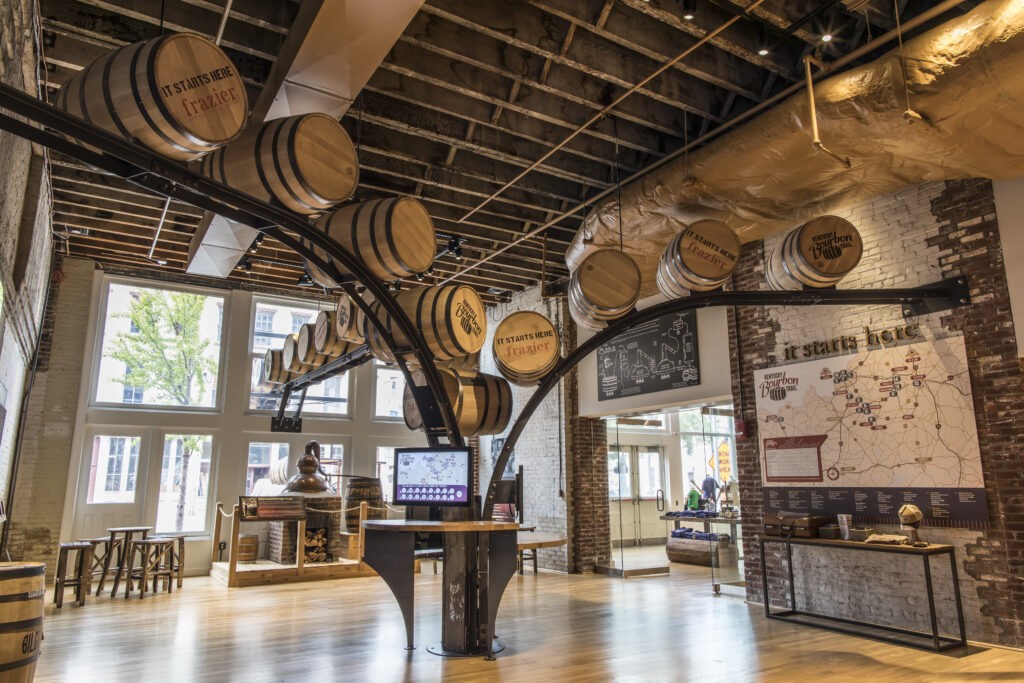
The Frazier History Museum’s welcome lobby showcases the barrels used in the bourbon-making process. Courtesy Weber Group.
In Weber’s backyard of Louisville, that story has been driven in large part by bourbon. Weber is recognized for their work on the Evan Williams Bourbon Experience, Kentucky Peerless Distilling Co. and most recently on the Frazier History Museum, the launchpad for the legendary Kentucky Bourbon Trail.
The Weber team insists that bourbon is one of the most authentically American things that the country has, and authenticity matters. “Bourbon is authentically American culture,” says Jim Doiron, Weber Group’s Partner and Director of Specialty Fabrication.
“Settlers moved to this region and used their ingenuity and a get-it-done attitude to see what they could do with their natural environment. They saw fresh water, what grains grew well, and had big, strong horses to help work the distilleries, and a booming bourbon industry was born,” says Max Weber, Director of Business Development.
“We approach our projects with that same work ethic,” explains Doiron. “Whether it’s fabricating a rock waterfall or designing an apartment building, our can-do approach means the sky’s the limit.”
Though those smaller corporate projects are near and dear to Weber, the group is equally as comfortable working on larger destination attractions, like a zoo or theme park. With major zoos in Cincinnati, Columbus, and Louisville and theme park owners like Cedar Fair, Herschend and Six Flags utilizing Weber’s services, it’s no surprise the company is well regarded in the industry.

Weber fabricated animals and props for the Kalahari Resort located in the Poconos. Courtesy Weber Group.
Given Weber’s understanding of the importance of the land and agriculture on the development of the Midwest, the team has placed a renewed focus on addressing the environmental impact of attractions. Through a recent joint venture with Infinite Kingdoms, Weber is a partner on what has been billed as “the world’s first sustainable play attraction,” combining solar, wind, hydro, and play power. The patent-pending design of Impact Attractions was developed to have a net-zero energy impact, and to empower guests to literally play with the Earth.
“Just as our fabrication tools have improved over time with added technology, our understanding of how design impacts the people and environment around it has evolved,” says Doiron. “Design is really an iterative process that benefits from our decades of experience.”
It’s this process of growth and improvement that empowers Weber Group in their own shop, in turn delivering uniquely authentic experiences for their clients. “The theory around here is that things should go from good to great every time they get passed down the line,” says McIntyre. “I’ll do a drawing, and it’ll pass on to shop drawings, a carver, or another artist, and they’re encouraged to put themselves into it as much as they can. They’re empowered to speak up, to make it better than what they received, and that’s how we exceed expectations.”
When thinking of the guests who frequent these regional theme parks and innovative play structures, Max Weber notes, “These are real people who are looking for an authentic experience they can relate to – whether that’s via adrenaline, learning about science or history, or enjoying foods authentically made from our local resources. There are few – and maybe no – experience elements more important than authenticity – being true to yourself and where you came from. That’s been true for our team, and it’s been the core of what’s made our clients succeed.”
From Ohio to Nebraska, North Dakota to Missouri, Midwest- based attraction design talent and design companies have grown and matured, with collaborators and creatives from all corners of the globe. They are behind some of the most remarkable, tourism-defining destinations in their backyards, as well as alluring icons of culture and fun on nearly every continent. • • •

Ben Cober combines his passions of adventure travel and experiential education to serve the tourism industry. Having worked in education, development, and marketing with Cincinnati Museum Center and the Indianapolis Children’s Museum, he most recently executed business development, marketing, and public relations strategy with PGAV Destinations.Today he resides in Seattle, WA with his family, where he has published three books and volunteers his time with the City, conservation organizations, and social causes. https://www.linkedin. com/in/bencober/


